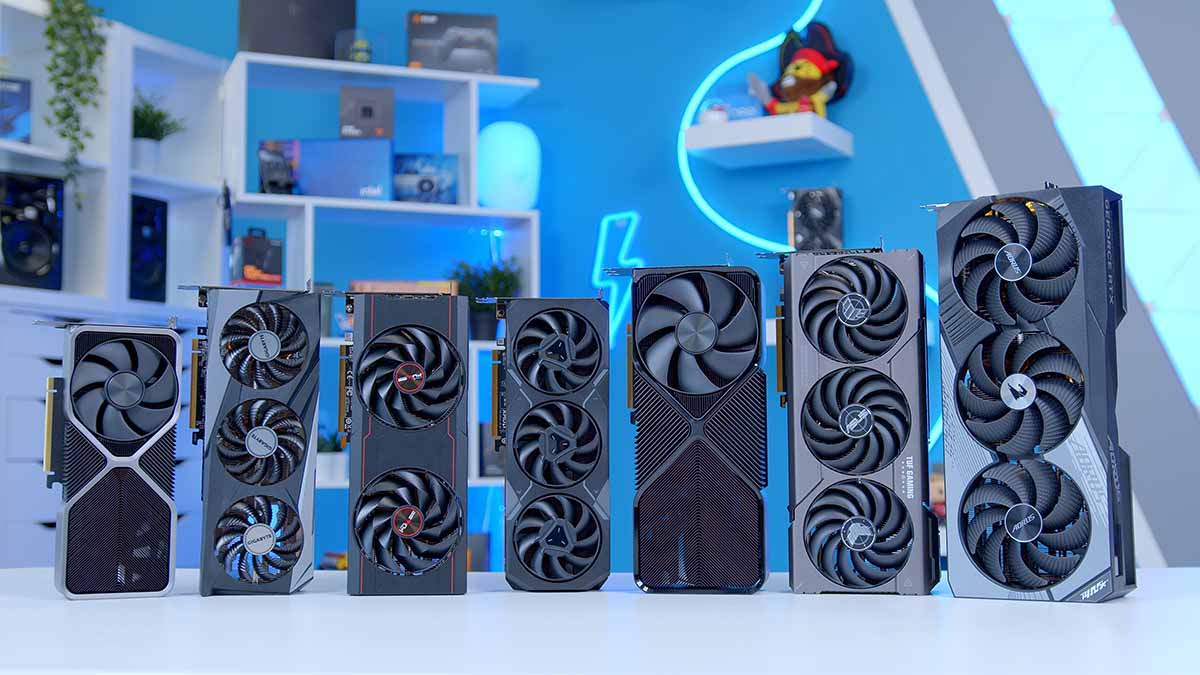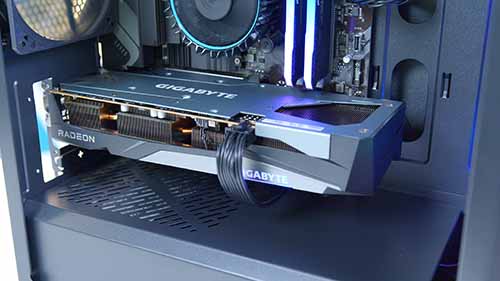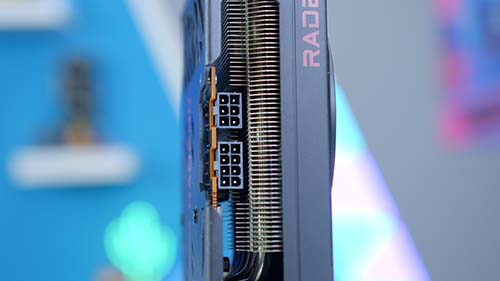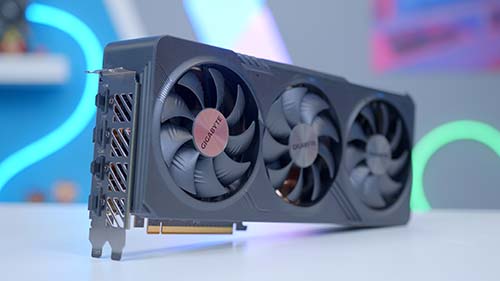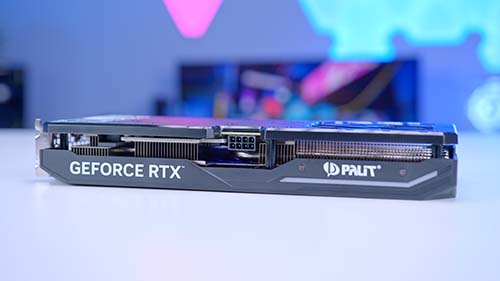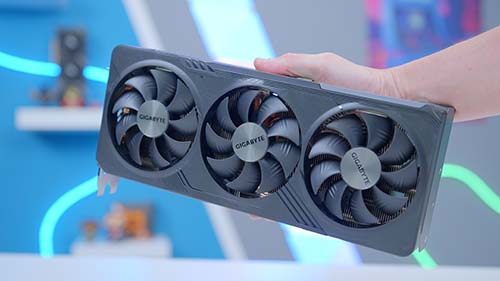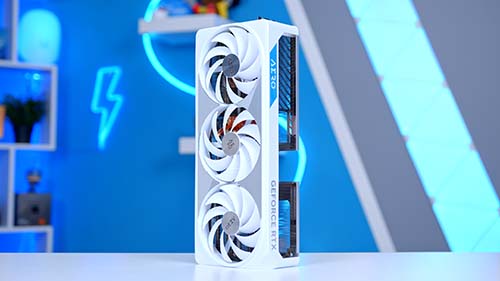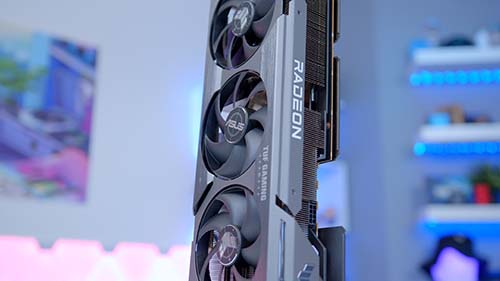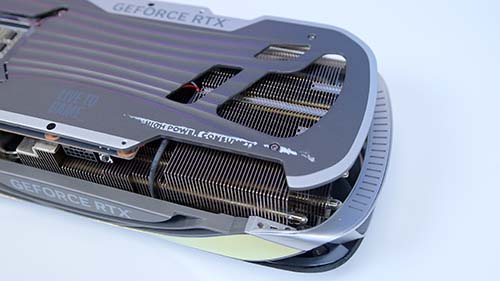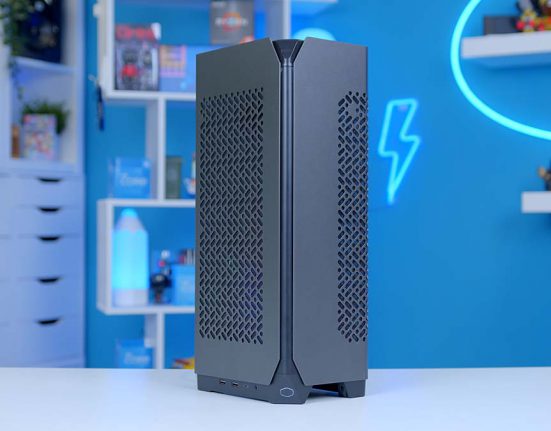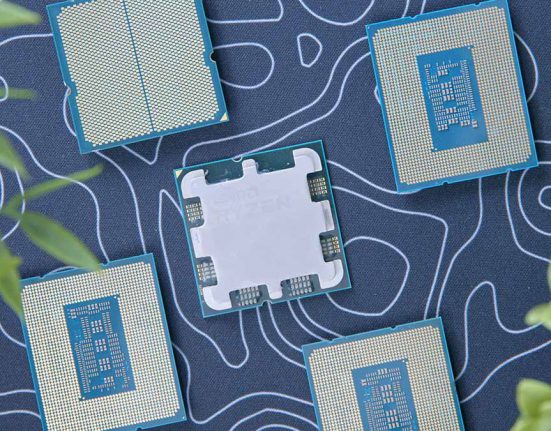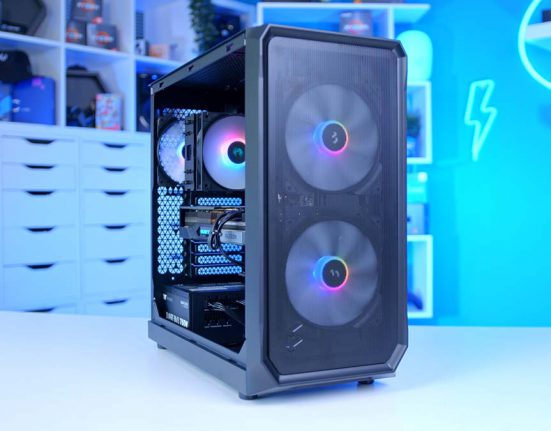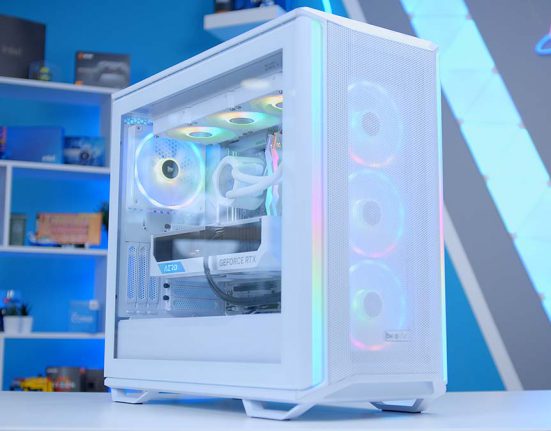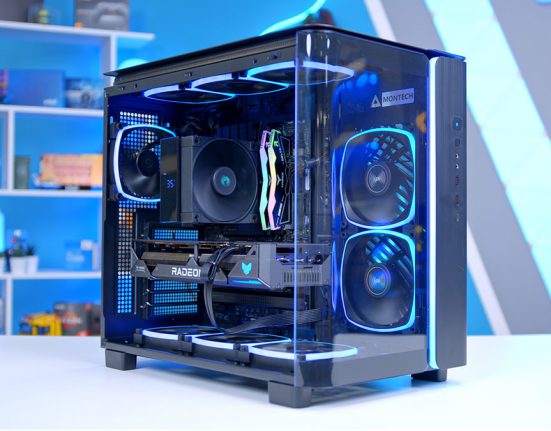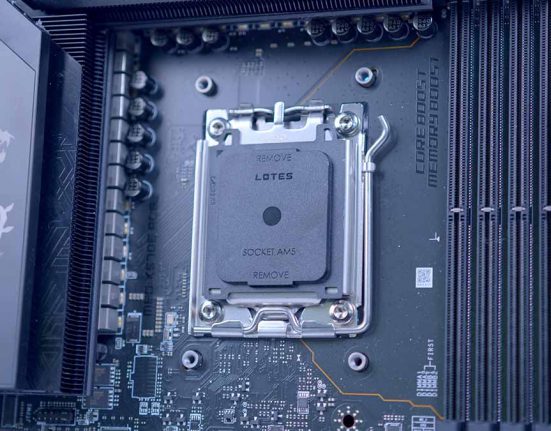The graphics card market in 2024 is the most competitive it has been in years. NVIDIA and AMD are in a constant battle to beat one another on pricing and performance by offering new GPUs, or by slashing existing prices down to a more affordable level. And with so many new options hitting the shelves, purchasing the right option for your PC build can be a confusing task. So how do you determine which are the best graphics cards to buy out of the myriad of GPUs available to choose from?
Here at GeekaWhat we’re well equipped to recommend the best options for a range of budgets – which is exactly what we’ll be doing here. Harry Coleman and James Cousins from our team are experts in GPU benchmarking and testing, having benchmarked every one of the cards released by AMD, NVIDIA and Intel in the last few years.
Our testing includes some of the biggest games out there, from popular esports titles like Apex Legends and Fortnite, to demanding AAA titles like Cyberpunk 2077, Starfield and Alan Wake II which gives us 1000s of data points for comparison. You can learn more about how we test graphics cards, and view detailed gaming benchmarks for all of the cards below.
Best Budget Graphics Cards
1. AMD Radeon RX 7600
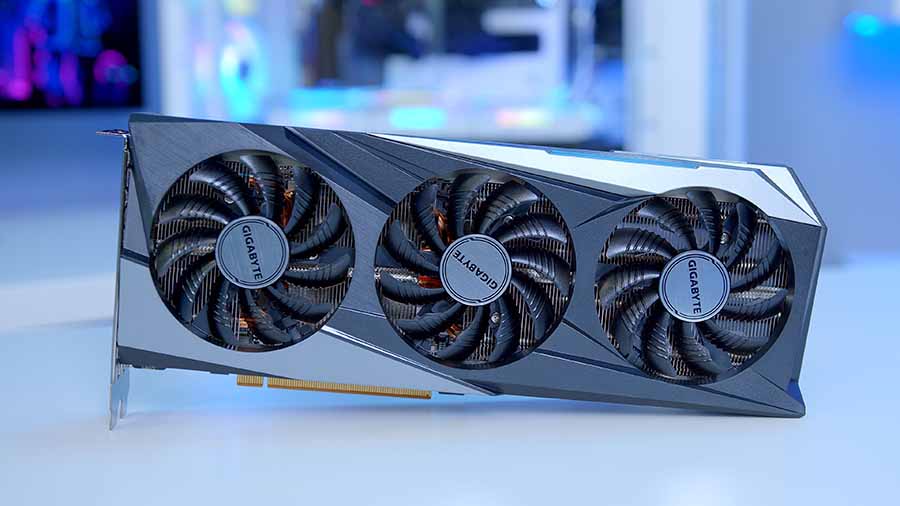
The best budget graphics card to buy in our testing is the AMD Radeon RX 7600. This GPU has a highly competitive sub-$300 MSRP, making it one of the most affordable options for those building a 1080p-oriented gaming PC. In a market where GPU pricing has been turbulent, the RX 7600 is an extremely tantalising option, and one that caters to price conscious buyers.
The RX 7600 can really hold its own when it comes to gaming performance. Across our testing we’ve found this GPU to offer high framerates across Esports titles like Apex Legends and Fortnite with the RX 7600 hitting 189FPS, and 273FPS respectively. Playing AAA titles at 1080p is more than feasible too, with the RX 7600 providing solid performance metrics within modern games such as Starfield and Hogwarts Legacy.
| Key Specs | AMD Radeon RX 7600 |
|---|---|
| Video Memory Capacity | 8GB GDDR6 |
| Memory Bus | 128-Bit |
| Base Clock Speed | 1.72GHz |
| Boost Clock Speed | 2.65GHz |
| Stream Processors | 2048 |
| Ray Accelerators | 32 |
| Power Draw | 165W |
| MSRP | $269 |
Performance in AAA titles at 1440p is an area where the RX 7600 could see some improvement. While the power of the card enables strong frame rates at 1440p, you are ultimately restricted by the amount of VRAM that this card has.
Ideally, AMD would have equipped this card with 10GB or 12GB, which would have gone a long way to improve performance longevity of the RX 7600. With that being said, more VRAM is only good if you have the bandwidth to go with it, which is why this card still earns our recommendation over the RX 7600 XT.
Overall, the RX 7600 is one of the few true-budget graphics cards that is able to offer excellent performance across a plethora of games, while coming in at an affordable price point.
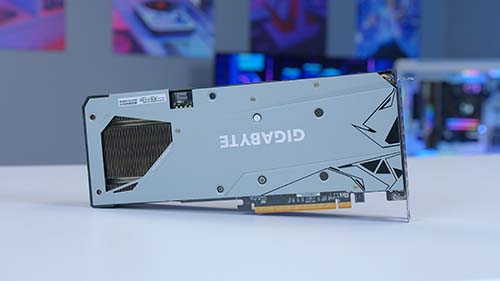
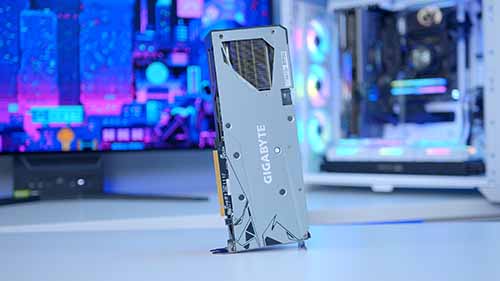
2. AMD Radeon RX 6750 XT
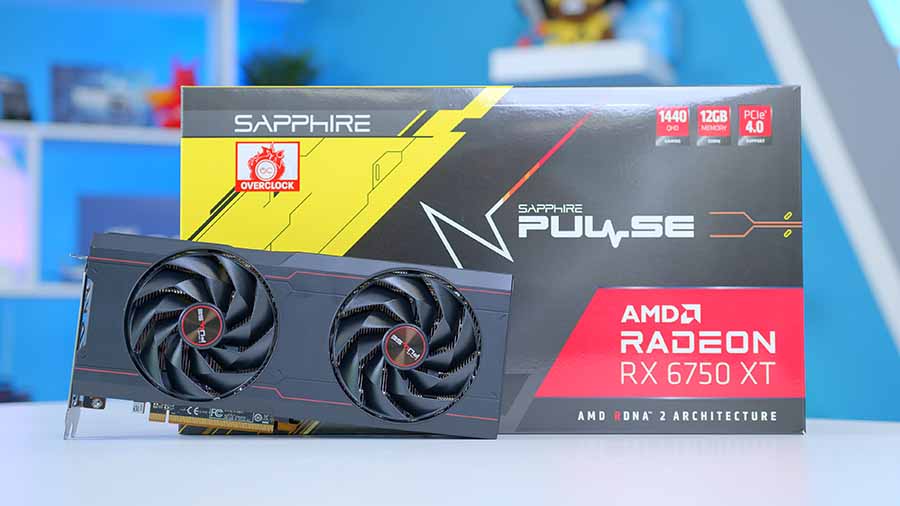
Stepping up a rung on the ladder, the Radeon RX 6750 XT is another excellent budget graphics card from AMD. The RX 6750 XT offers buyers 12GB of VRAM to play around with, while maintaining a competitive price point versus market alternatives like the RTX 4060 and RTX 4060 Ti. This GPU significantly benefits from the increased VRAM and stronger memory bus, resulting in solid 1440p gaming performance.
In Hogwarts Legacy, the RX 6750 XT held strong with an 85FPS average, which is a 21FPS bonus versus the RX 7600, demonstrating that more VRAM is key in many titles.
Although the RX 6750 XT is an older Radeon 6000 card, it has retained a great value-proposition even as stock begins dwindles due to it being a discontinued option. Across our testing we found the RX 6750 XT to be more than capable at 1080p, while providing great metrics at 1440p too. Buyers can also utilise FSR 3 and Fluid Motion Frames to improve performance when needed.
| Key Specs | AMD Radeon RX 6750 XT |
|---|---|
| Video Memory Capacity | 12GB GDDR6 |
| Memory Bus | 192-Bit |
| Base Clock Speed | 2.15GHz |
| Boost Clock Speed | 2.49GHz |
| Stream Processors | 2560 |
| Ray Accelerators | 40 |
| Power Draw | 250W |
| MSRP | $269 |
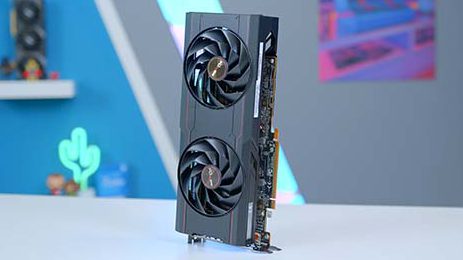
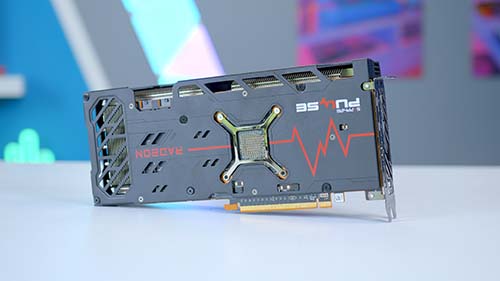
As we’ve alluded to above, the RX 6750 XT is a great card, but only for a limited time. Stocks of this GPU are gradually depleting, and they won’t be replenished once vendors are fully out. So if you plan on picking up this great budget option, you’ll need to make sure you do it while this card is still available.
Best Mid-Range Graphics Cards
3. AMD Radeon RX 7700 XT
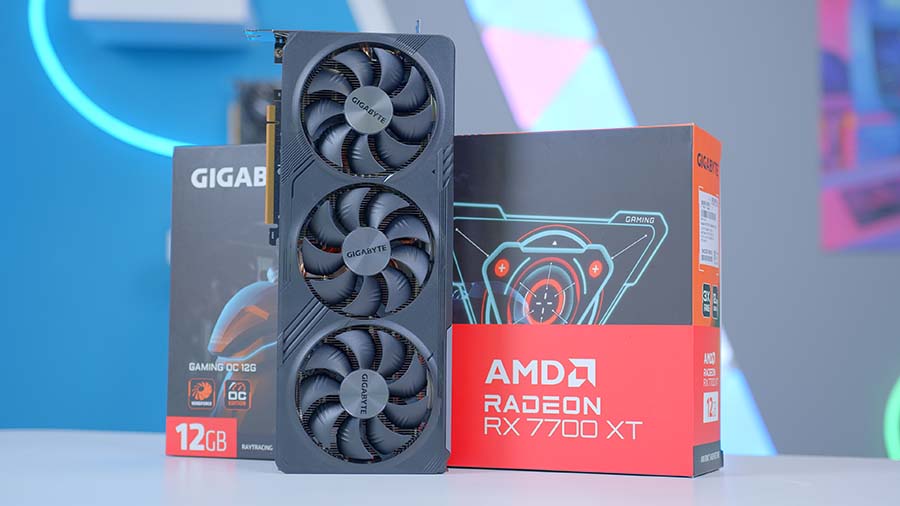
The RX 7700 XT is geared towards buyers that have got a bit more cash to spend, and are looking to play most of their games predominantly at 1440p. Due to a range of price drops, the RX 7700 XT offers a better value-proposition that it did during its initial launch, now sitting around the $400 mark. This puts about $100 of room between the RX 7700 XT and the RX 7800 XT, making the former a really solid option for those sticking to a tight budget.
Performance wise, the RX 7700 XT is a huge competitor in the 1440p space, outputting high framerates in the vast majority of titles. In modern AAA games like Hogwarts Legacy, the RX 7700 XT can easily cope with the performance requirements, outputting an average framerate of 92FPS in our testing.
The rasterization capability of this GPU is phenomenal across Esports titles too, offering up 209FPS in Apex Legends at 1440p, and 295FPS in Fortnite at 1080p. Overall, the RX 7700 XT is a very good ‘bang for your buck option.
| Key Specs | AMD Radeon RX 7700 XT |
|---|---|
| Video Memory Capacity | 12GB GDDR6 |
| Memory Bus | 192-Bit |
| Base Clock Speed | 1.7GHz |
| Boost Clock Speed | 2.54GHz |
| Stream Processors | 3456 |
| Ray Accelerators | 54 |
| Power Draw | 245W |
| MSRP | $449 |
The only weakness that we’d recommend considering is the ray tracing capability of this GPU. While AMD cards have come a long way with improvements to ray traced gameplay, and performance uplifts with their FSR technology, NVIDIA’s cards are plainly better when it comes to ray tracing. AMD thrives in rasterized games, but buyers looking to play their favourite titles with ray tracing switched on should look at some NVIDIA options.
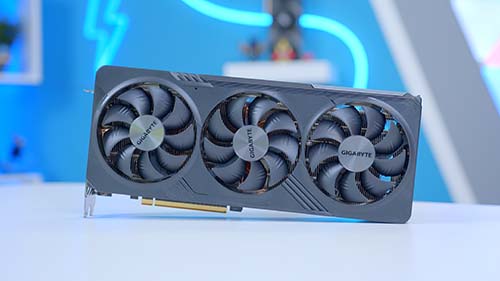
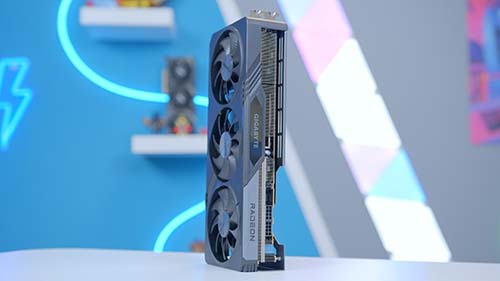
4. NVIDIA GeForce RTX 4070
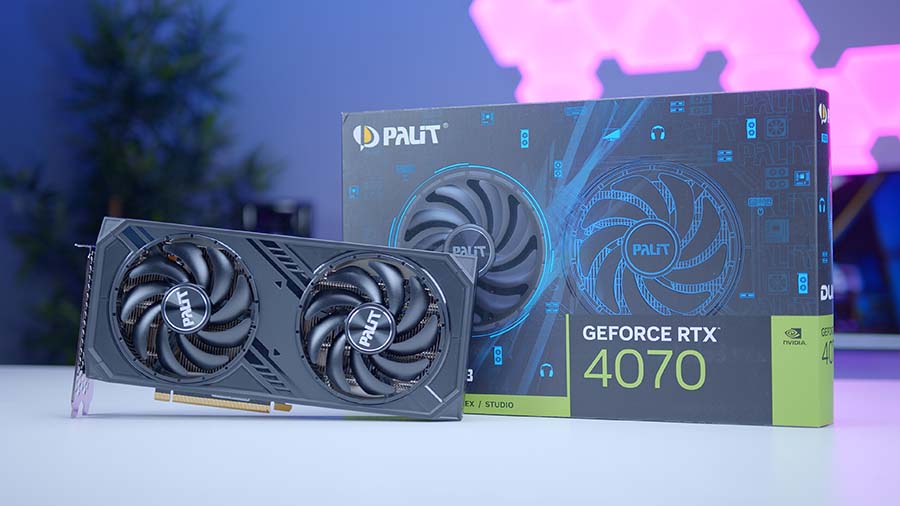
NVIDIA’s RTX 4070 is another excellent 1440p capable graphics card that opens up options for those playing games with ray tracing. Since the launch of the RTX 4070 SUPER, NVIDIA have dropped the price of the existing RTX 4070 down to $499. This puts the RTX 4070 in direct competition with AMD’s RX 7800 XT, which makes it a worthy consideration if you’re looking for a GPU around the $500 mark.
On the performance front, the RTX 4070 offers great performance at 1440p across Esports titles like Apex Legends, where our testing saw an average framerate of 215FPS. AAA titles like Hogwarts Legacy don’t pose a problem for the RTX 4070 either, with this GPU pushing out a very respectable 85FPS.
Buyers can expect solid ray tracing gameplay thanks to the Ada Lovelace architecture. Performance can also be further assisted using DLSS 3.0 or Frame Generation which bolsters framerates across a myriad of different games that support it.
| Key Specs | NVIDIA GeForce RTX 4070 |
|---|---|
| Video Memory Capacity | 12GB GDDR6X |
| Memory Bus | 192-Bit |
| Base Clock Speed | 1.92GHz |
| Boost Clock Speed | 2.47GHz |
| CUDA Cores | 5888 |
| RT Cores | 46 |
| Power Draw | 200W |
| MSRP | $599 |
The biggest draw back of the RTX 4070 is the fact that the RX 7800 XT offers a healthy dose of competition for this card. While the RTX 4070 does come in at a considerably stronger price in comparison to when it launched, the RX 7800 XT does offer some performance bonuses along with extra VRAM.
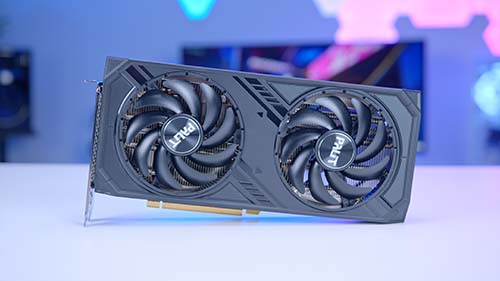
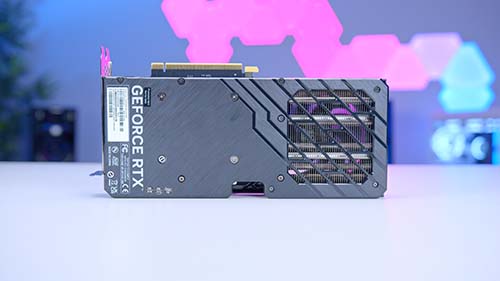
5. AMD Radeon RX 7800 XT
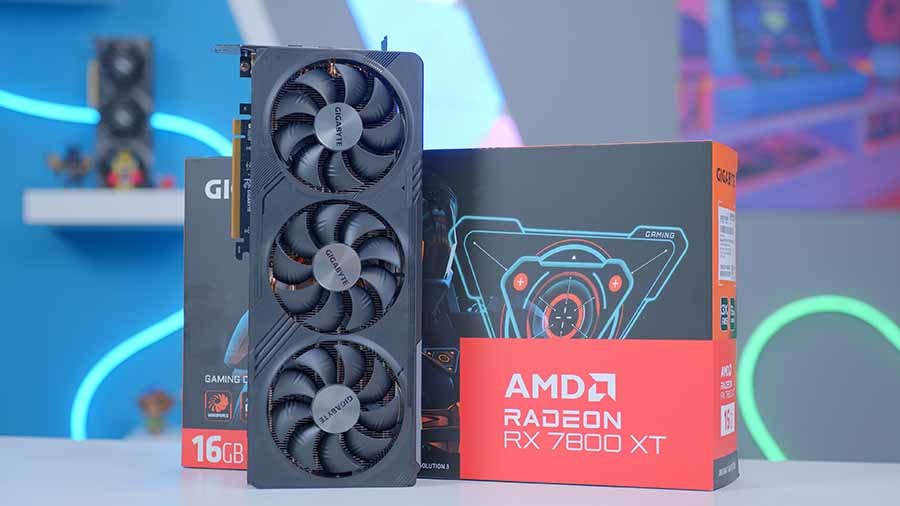
AMD’s RX 7800 XT is one of the most impressive mid-range graphics cards to release from Team Red. The RX 7800 XT is an incredibly strong 1440p capable graphics card that maximises framerates across a plethora of games.
The rasterized capability of the RX 7800 XT is effectively unrivalled at this price class, making the RX 7800 XT a very cost effective option for 1440p gaming. For example, in Hogwarts Legacy, the RX 7800 XT was able to offer up 102FPS on average. This is one of the few graphics cards that can provide such strong framerates across AAA titles, while maintaining a very affordable price tag.
One of the major benefits of this card versus the RTX 4070 in particular is the 16GB of GDDR6 VRAM you have available to you. While the 4GB bonus versus the RTX 4070 won’t be particularly noticeable straight away, you’ll see more performance benefits in demanding AAA titles where VRAM usage is much higher. It is also good for the overall longevity of the card moving forward.
| Key Specs | AMD Radeon RX 7800 XT |
|---|---|
| Video Memory Capacity | 16GB GDDR6 |
| Memory Bus | 256-Bit |
| Base Clock Speed | 1.29GHz |
| Boost Clock Speed | 2.43GHz |
| Stream Processors | 3840 |
| Ray Accelerators | 60 |
| Power Draw | 263W |
| MSRP | $499 |
Unlike the RTX 4070, the RX 7800 XT isn’t a great graphics card for ray tracing. AMD hasn’t quite caught up to NVIDIA in terms of their ray tracing technology, resulting in generally weaker performance when ray tracing is switched on. We’d recommend looking at some NVIDIA alternatives if you plan on pushing your gaming PC with ray traced games.

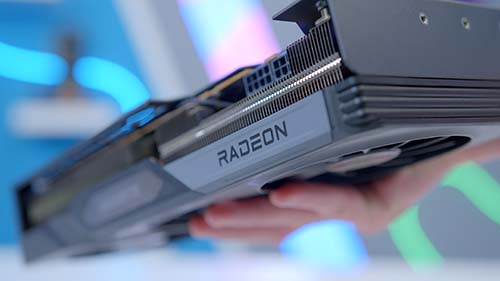
Best High-End Graphics Cards
6. NVIDIA GeForce RTX 4080 SUPER
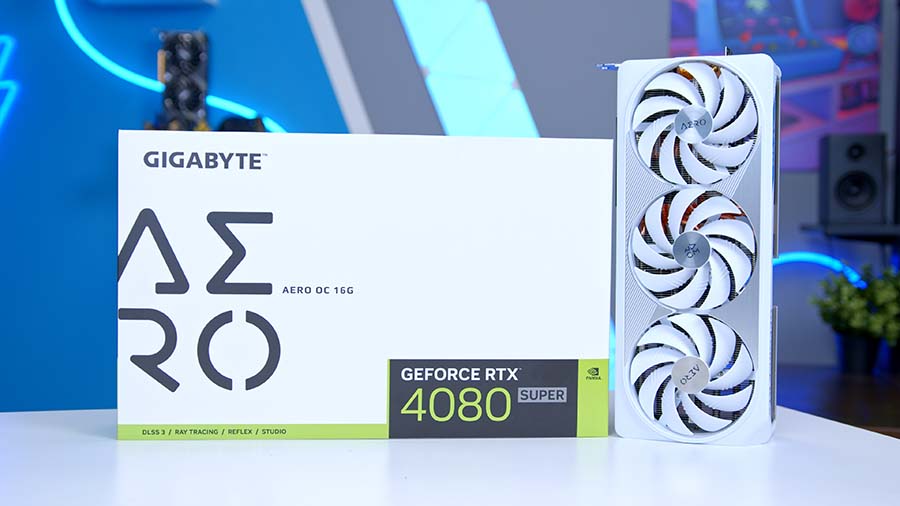
NVIDIA’s RTX 4080 SUPER is the third of the ‘SUPER’ cards to release as part of a mid-life refresh for a select few of the RTX 4000 range. The original RTX 4080 was already an excellent card, but came in at a price point that most deemed too high considering the available performance. However, the RTX 4080 SUPER improves framerates by about 2-3% across most games, while dropping the MSRP to a much more tolerable $999.
This puts the RTX 4080 SUPER in direct competition with the RX 7900 XTX, while offering slightly less VRAM. Our testing has found that the RTX 4080 SUPER is more than capable of withstanding the performance demands of 1440p and 4K gaming, even with ray tracing enabled.
In Hogwarts Legacy at 1440p high settings, the RTX 4080 SUPER output 131FPS on average, making it one of the most capable GPUs that we’ve tested. Across the board, the RTX 4080 SUPER is a highly capable graphics card that won’t disappoint on the performance front.
| Key Specs | NVIDIA GeForce RTX 4080 SUPER |
|---|---|
| Video Memory Capacity | 16GB GDDR6X |
| Memory Bus | 256-Bit |
| Base Clock Speed | 2.29GHz |
| Boost Clock Speed | 2.55GHz |
| CUDA Cores | 10240 |
| RT Cores | 80 |
| Power Draw | 320W |
| MSRP | $999 |
While the RTX 4080 SUPER is a definitively solid graphics card, those looking for more longevity within modern games should consider the RX 7900 XTX from AMD. The RX 7900 XTX isn’t as strong in ray traced games, but the 8GB increase in VRAM will be worth it for many.
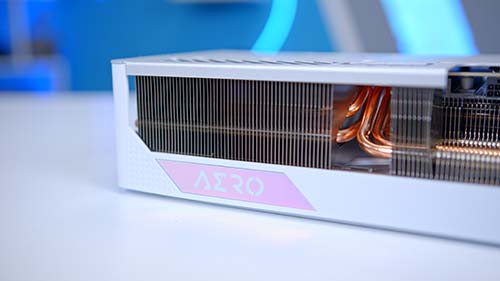
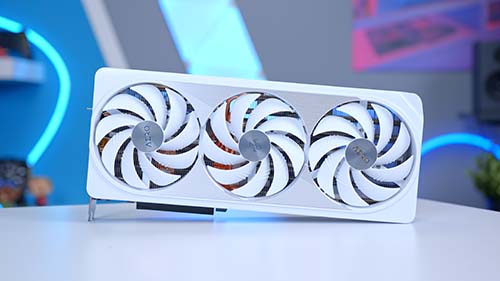
7. AMD Radeon RX 7900 XT
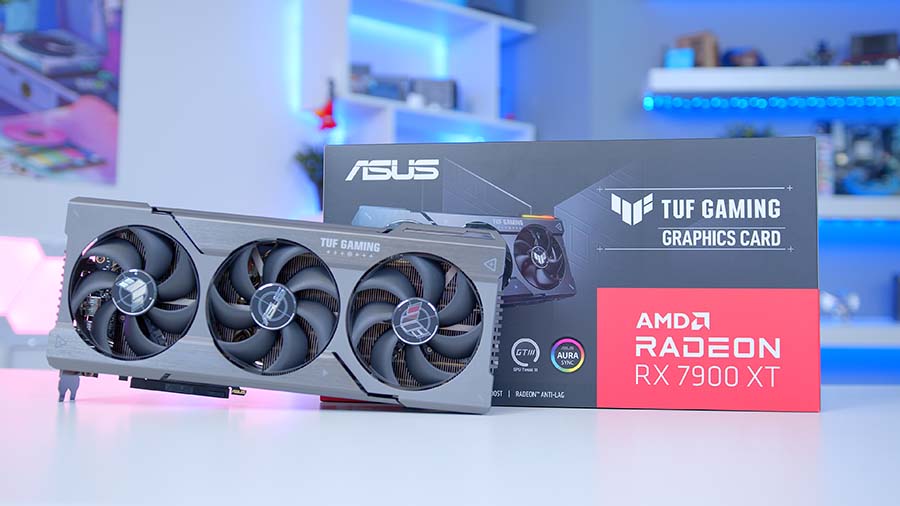
A solid alternative to the RTX 4080 SUPER is AMD’s Radeon RX 7900 XT. Originally, we felt that the RX 7900 XT was a good card that launched with a price class that didn’t match the performance output. But AMD responded to this during NVIDIA’s RTX 4000 SUPER launch by slashing the price down to $700, which is a much more reasonable amount of money to spend on this particular card.
Performance wise, the RX 7900 XT is a very strong graphics card offering 115FPS in Hogwarts Legacy, with increasingly solid performance across other AAA titles. Games like Apex Legends and COD Warzone also pose no problems for the RX 7900 XT at 4K and 1440p, making it a great contender at this price point.
| Key Specs | AMD Radeon RX 7900 XT |
|---|---|
| Video Memory Capacity | 20GB GDDR6 |
| Memory Bus | 320-Bit |
| Base Clock Speed | 1.5GHz |
| Boost Clock Speed | 2.39GHz |
| Stream Processors | 5376 |
| Ray Accelerators | 84 |
| Power Draw | 300W |
| MSRP | $899 |
Much like the RX 7900 XT’s siblings, this GPU does tend to struggle with ray tracing. Across the board, AMD’s high-end GPUs are not able to compete with NVIDIA when it comes to ray traced gameplay. However, if you’re willing to take a loss on this feature, the RX 7900 XT is one of the most competitively priced graphics cards on the market right now and definitely worth considering for a high-end PC build.
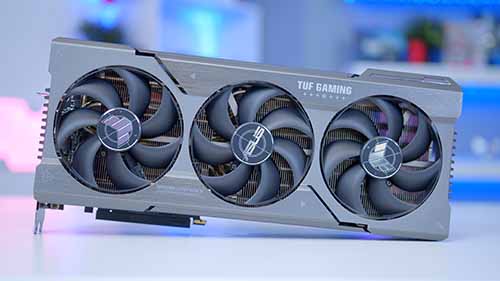
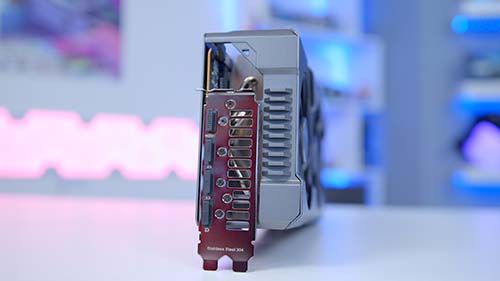
8. NVIDIA GeForce RTX 4090
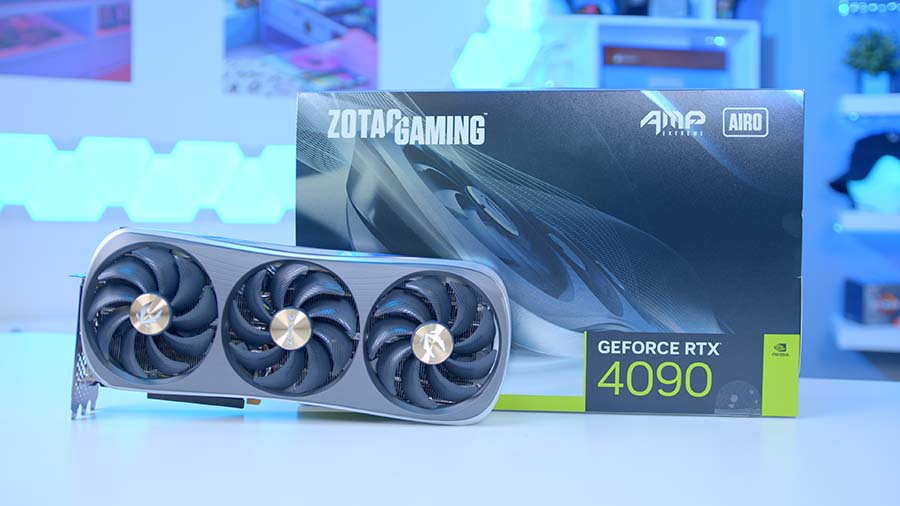
NVIDIA’s RTX 4090 is without a doubt the most powerful graphics card on the market right now. This GPU outperforms every other modern GPU, whether you’re playing at 1440p, or you’re maxing out all of your settings at 4K with all the bells and whistles. There isn’t a graphics card that comes close to the RTX 4090 making it a one of a kind option purely based on performance.
Across all of our testing the RTX 4090 comes out on top with the highest framerates. COD Warzone at 1440p high settings saw an average of 202FPS, while in Fortnite at 1080p low settings, the RTX 4090 offered up 345FPS, which is the strongest we’ve ever seen across our entire testing suite!
The RTX 4090 is able to offer exceptional performance in pretty much every game you throw it at, whether you’re looking to play an Esports title, or you’re playing an intense AAA game. The high core counts, clock speeds, and VRAM capacity allow you to max out your settings with ray tracing enabled, which isn’t a possibility with the vast majority of other graphics cards at 4K.
| Key Specs | NVIDIA GeForce RTX 4090 |
|---|---|
| Video Memory Capacity | 16GB GDDR6X |
| Memory Bus | 256-Bit |
| Base Clock Speed | 2.29GHz |
| Boost Clock Speed | 2.55GHz |
| CUDA Cores | 10240 |
| RT Cores | 80 |
| Power Draw | 320W |
| MSRP | $999 |
The only major caveat to consider with the RTX 4090 is the price. While NVIDIA has every right to capitalise on their most powerful graphics card, $1599 is not a small amount to spend on a PC build, let alone one component. If you’re willing to shell out the cash, you won’t be disappointed, but there are a number of excellent alternative graphics cards that provide a high quality experience that don’t cost $1599.
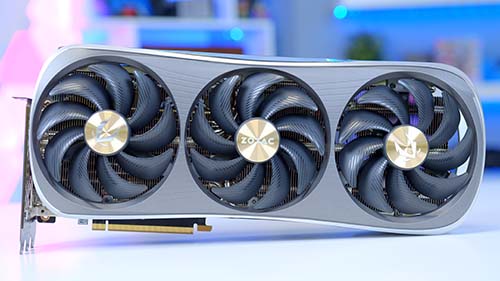
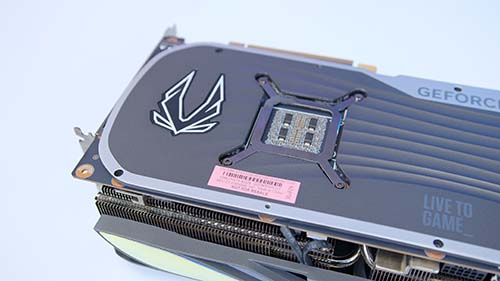
How We Tested the Best Graphics Cards
All of the graphics cards in this article have gone through rigorous testing in order to provide us with heaps of data. We then use this performance data to inform all of our recommendations, ensuring that each component option caters to a massive range of buyers.
All of the graphics cards that we test are benchmarked within a plethora of Esports games and AAA titles at three major resolutions (1080p, 1440p, and 4K). We also record all of the settings that we’ve used to make sure that our tests are fair and repeatable. You can find a full rundown of our testing and benchmarking methodology within our how we test graphics cards article.
Gaming Performance
One of the most important metrics to assess a graphics card is to see how it performs within your favourite games. We’ve accumulated a mass of data from AMD, NVIDIA, and Intel GPUs. In this section we’ll be running you through the performance to see how these cards perform across Esports and AAA games.
Hogwarts Legacy
Settings: 1440p, Shadow Quality High, Indirect Lighting High, Reflections High, Crowd Density High, Particle Quality High, Volumetric Lighting High, Motion Blur off, GTAO Quality High, Grass Quality High, Contact Shadows High VSync Off, DLSS/FSR: On/Off, Ray Tracing: On/Off, Textures: High
In Hogwarts Legacy at 1440p high settings, we saw pretty solid performance from the RX 7600. While being restricted by the 8GB of VRAM, the performance that we saw from the RX 7600 was more than playable, with an average framerate of 64FPS. The RX 6750 XT did offer a slight performance uplift, with an 85FPS average, The increased VRAM here is definitely benefitting the RX 6750 XT.
The performance results from the RX 7700 XT, RTX 4070, and RX 7800 XT were pretty close together. The RTX 4070 was able to output exactly the same framerate as the RX 6750 XT, while the RX 7700 XT offered up 92FPS. The RX 7800 XT is the strongest performer of the mid-range bracket with a 102FPS average.
The RX 7900 XT output 115FPS on average, with the RTX 4080 SUPER offering around 16 more frames up to 131FPS. Ultimately, hitting high frame rates isn’t as important in this single player title, but those looking for more stability will want to pick up a mid-range or high-end graphics card to ensure performance doesn’t dip in intense areas of the gameplay.
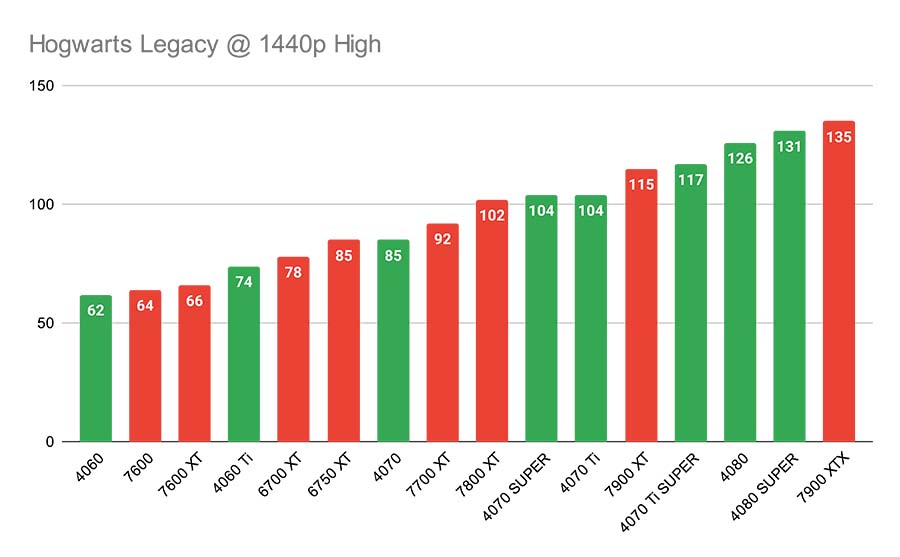
Apex Legends
Settings: 1440p, Anti-aliasing TSAA, Texture Filtering 8X, Model Detail High, VSync Disabled, Effects High, Ambient Occlusion Quality High
In Apex Legends at 1440p, performance was consistent across all of the graphics cards that we’ve tested. The RX 7600 does sit at the bottom of the graph, but with an average of 145FPS, which means you’re still surpassing that 144Hz sweet spot that is effectively required in a fast-paced title like Apex Legends.
Moving further up the graph, the RX 6750 XT and RX 7700 XT were able to output 163FPS and 175FPS respectively, which is solid at 1440p. As we start to move into the high-end, performance becomes a bit more tightly knit. The RX 7800 XT was one of the best performers within the mid-range bracket, while the RTX 4080 SUPER and RTX 4090 lead the fore with 271FPS and 287FPS. Ultimately you’re not going to see a noticeable difference here, but the numbers themselves are still impressive.
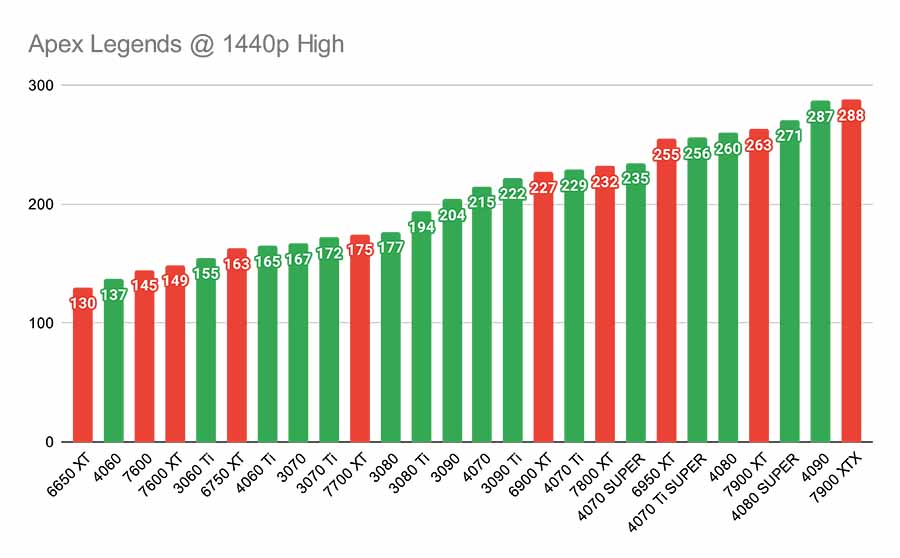
COD Warzone
Settings: 1440p, Upscaling/Sharpening FSR 2.1/DLSS Quality (80 Sharpness), Texture Resolution High, Texture Filter Anisotropic High, Level of Detail High
In COD Warzone performance is a bit more diminished in comparison to Apex Legends, but each card that we tested still held up very well. In this particular benchmark, the RX 7600 and RX 6750 XT offered exactly the same performance metrics, outputting a 121FPS average. This is slightly under the 144Hz sweet spot that we love to see, but considering the performance you’re getting from both of these GPUs at their respective price points, the framerates are impressive.
Moving up to the mid-range options, the RX 7700 XT, RTX 4070, and RX 7800 XT all sat pretty close together in terms of framerates. There is about a 2-3 FPS average between all of these cards with the RX 7800 XT offering the best performance with 143FPS, while the RX 7700 XT sits at the bottom of the 3 cards with a 137FPS average.
All of the high-end cards unsurprisingly performed very well, with the RTX 4090 yet again leading the group. The RX 7900 XT was able to output 167FPS putting us past the 144Hz sweet spot, while the RTX 4080 SUPER sat at 188FPS, and the RTX 4090 sat at 202. Again framerates this high are going to be pretty negligible, but if you’ve got a high refresh rate monitor, one of these top-end cards will be a perfect option.
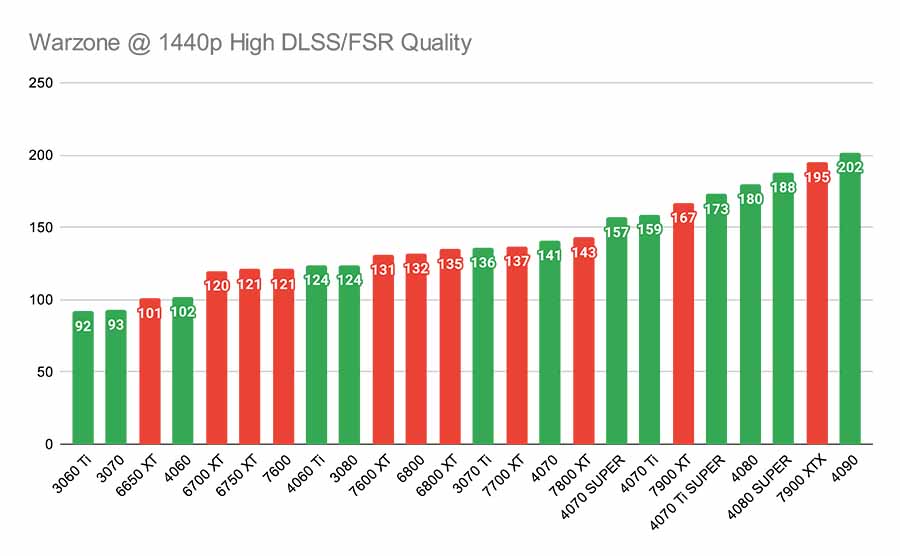
Fortnite
Settings: 1080p, Quality Low, Anti-aliasing & Super Resolution TSR High, Temporal Super Resolution Performance, View Distance Far, Textures Low
In Fortnite at 1080p low settings, the entire suite of cards within this buyers guide were able to perform exceptionally well, hitting well over 200FPS across the board. The RX 7600 was able to output 273FPS on average, with the RX 6750 XT sitting slightly above this with 280FPS. The RX 7700 XT and RTX 4070 were pretty close together performance wise, with the former offering up 295FPS, and the latter hitting 288FPS on average.
Performance differences at framerates this high are going to be relatively negligible, but its still impressive to see the number rise. The RX 7800 XT, yet again sits at the top of the mid-range bracket, with 302FPS average. The high-end graphics cards sat well above the 300FPS mark with the RX 7900 XT offering 319FPS.
There’s a minor difference in performance between the RX 7900 XT and the RTX 4080 SUPER, with 1 frame between them. The RTX 4090 in Fortnite yet again does not disappoint, offering 345FPS on average within this hit Esports title.
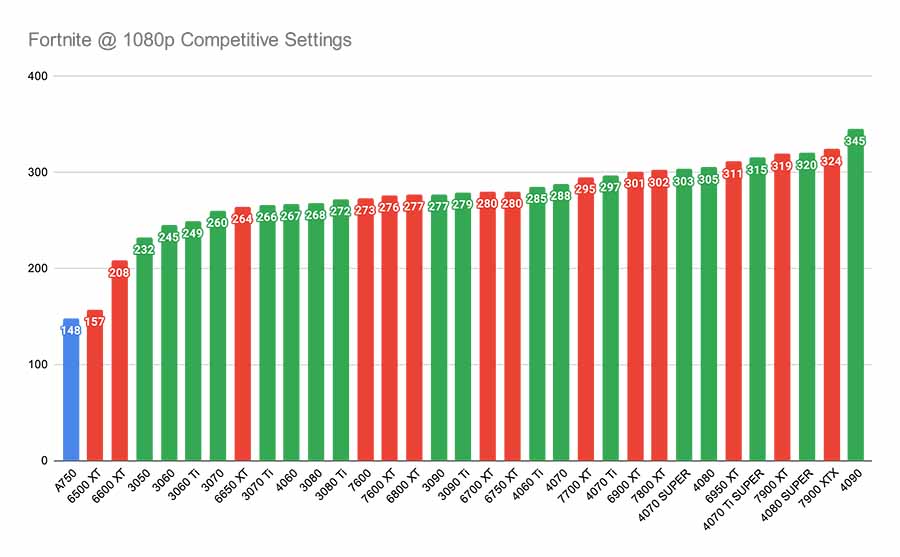
Frequently Asked Questions
Do You Need A 12VHPWR Cable?
AMD graphics cards do not require a 12VHPWR cable, while NVIDIA’s RTX 4000 series do. If you do not have one, you can use an adapter that comes included in the box.
Is NVIDIA or AMD Better for Ray Tracing?
While AMD’s graphics cards have come a long way, NVIDIA is generally much better when it comes to ray traced performance specifically.
Should I Worry About Case Clearance?
You should always check the length of your graphics card versus the maximum clearance in your case to ensure you don’t face any installation problems.


